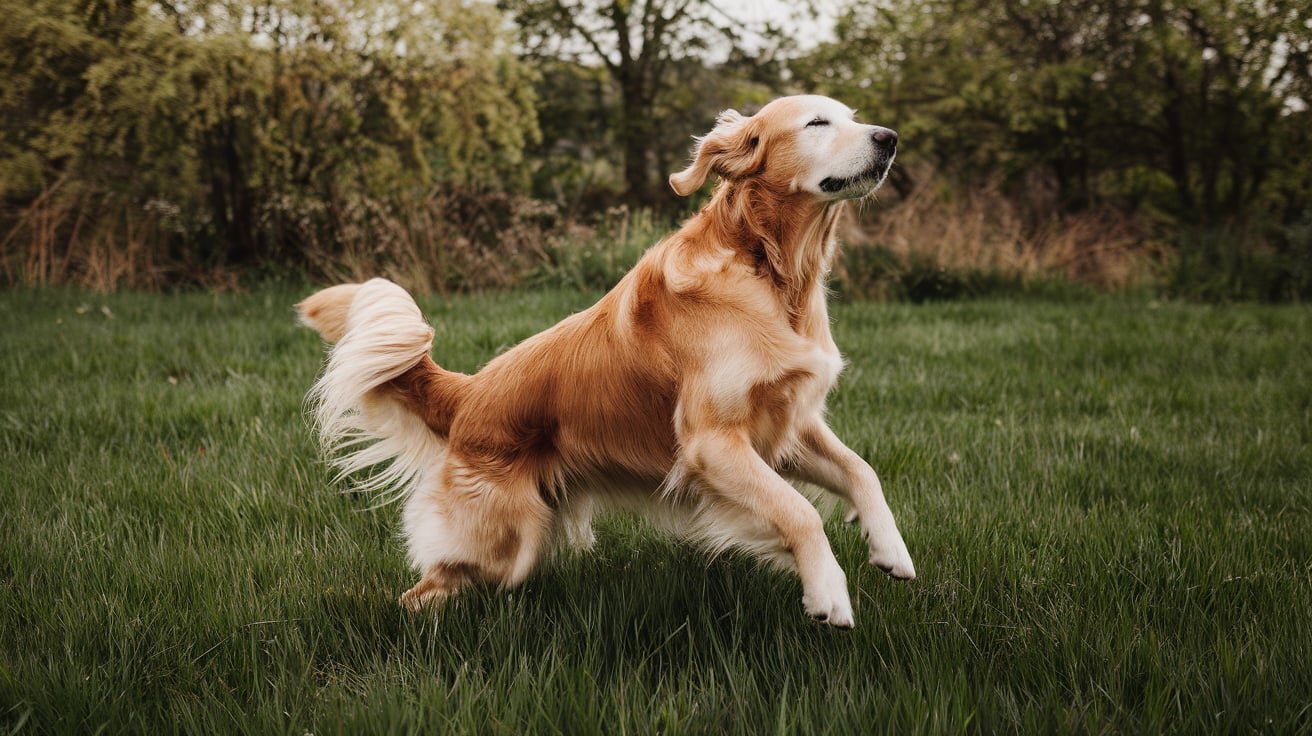If you’re a dog owner in the UK, you’ve probably noticed that dogs sometimes have little quirks, like an occasional twitch or shake. One of the more worrying issues many pet owners face is seeing their dogs back legs shaking. This could be a harmless habit or a sign of an underlying health issue. In this article, we’ll cover the reasons why your dog’s back legs may be shaking, how to recognize if it’s something serious, and what steps you can take to address the issue.
1. Understanding the Common Causes of Back Leg Shaking in Dogs
There are various reasons why your dogs back legs shake, some of which are harmless, while others may require immediate attention. Let’s explore the most common causes:
a. Old Age and Muscle Weakness
As dogs age, they tend to lose muscle mass and strength, especially in their back legs. Much like humans, they may experience tremors or shaking as their muscles weaken. This is particularly common in older breeds such as Golden Retrievers, German Shepherds, and Labrador Retrievers.
Personal anecdote:
My Golden Retriever, Bailey, started experiencing back leg shakes when he was around 10 years old. At first, I thought it was just his excitement, but after a visit to the vet, it turned out to be a sign of muscle loss due to aging. The vet recommended some joint supplements and light exercises, which greatly improved his condition.
b. Joint Pain and Arthritis
One of the leading causes of dogs back legs shaking is arthritis. Arthritis causes inflammation in the joints, making movement painful and difficult. Dogs with arthritis will often experience shaking, especially after sitting for long periods or following a walk.
Symptoms of arthritis can include:
- Stiffness in movement
- Difficulty getting up from lying down
- Reluctance to climb stairs or jump
- Swollen joints
To alleviate arthritis in your dog, it’s essential to manage their weight and provide supplements like glucosamine and chondroitin. Regular vet check-ups can help ensure the right treatment plan is followed.
c. Anxiety and Excitement
Just like humans, dogs can shake when they are anxious or overly excited. Have you ever noticed your dog trembling while waiting for you to throw a ball or before visiting the vet? This type of shaking typically affects the back legs and is usually harmless. However, if it occurs frequently or is combined with other symptoms, it might be worth investigating further.
d. Neurological Disorders
In some cases, shaking in a dog’s back legs can be caused by a neurological disorder. Conditions such as degenerative myelopathy, which affects the spinal cord, or epilepsy may present as leg tremors. If your dog’s shaking is accompanied by other signs such as incoordination, weakness, or even seizures, it’s crucial to seek immediate veterinary attention.
2. How to Help Your Dog: A Step-by-Step Guide
If your dog’s back legs are shaking, there are practical steps you can take to manage or reduce the issue. Let’s break down what you can do.
Step 1: Observe and Record Symptoms
Start by observing when and how frequently your dogs legs are shaking. Take note of the following:
- Time of day the shaking occurs (e.g., after a walk, while resting)
- Duration of the shaking
- Other symptoms (e.g., limping, stiffness, or incoordination)
Keeping a log of these observations will be incredibly helpful when you visit the vet.
Step 2: Schedule a Vet Appointment
If you suspect the cause of the shaking is medical, it’s always best to consult your vet. They may conduct tests such as blood work, X-rays, or even neurological exams to determine the cause of the shaking in your dog’s back legs.
Pro-tip: When visiting the vet, make sure you bring any videos of the shaking episodes and notes on your dog’s behavior.
Step 3: Manage Joint Pain
For dogs diagnosed with arthritis or joint pain, the following remedies can help:
- Supplements: Glucosamine and Omega-3 fatty acids are often recommended to help with joint health.
- Weight Management: Keeping your dog at a healthy weight reduces stress on their joints.
- Low-Impact Exercises: Swimming or short walks can keep their muscles strong without aggravating joint pain.
3. Preventing Shaking in Dogs
While some causes of shaking can’t be avoided, you can certainly take steps to minimize the risks.
a. Regular Exercise and a Balanced Diet
Keeping your dog active is one of the best ways to maintain muscle strength and prevent issues like arthritis. Choose activities that fit their breed and size, and always provide a balanced diet to support their overall health.
b. Supplements for Joint Health
If your dog is prone to joint problems, consider adding joint supplements to their daily routine. Products containing glucosamine, chondroitin, and MSM are designed to improve joint health and flexibility, which could reduce shaking caused by arthritis or muscle weakness.
4. When to Worry About Your Dog’s Back Leg Shaking
In some cases, shaking can be a sign of something more serious. Look out for these warning signs:
- Limping or dragging legs
- Uncontrolled seizures or convulsions
- Difficulty standing or walking
- Sudden weight loss or lack of appetite
If your dog displays any of these symptoms, seek veterinary help immediately. While some causes of leg shaking are manageable, others may require more intensive treatment.
5. Recommended Products for Dog Leg Health
To help ease your dog’s discomfort and prevent further shaking, here are some product recommendations for dog owners in the UK:
- Glucosamine Supplements: These can help support joint health and reduce inflammation.
- Orthopedic Dog Beds: Providing extra comfort for dogs suffering from arthritis or joint pain.
- Joint-Friendly Dog Food: Look for brands that include added supplements for joint and bone health.
By investing in these products, you can ensure that your dog lives a more comfortable and healthy life.
Conclusion
When it comes to your dogs back legs shaking, there are various reasons this could be happening—from aging and joint pain to neurological disorders and anxiety. While some causes are natural and part of aging, others may require medical intervention. The most important thing is to pay attention to your dog’s behavior and consult a vet if you have concerns.
By taking proactive steps like maintaining a healthy lifestyle, providing joint supplements, and consulting a vet when necessary, you can ensure that your dog remains comfortable and happy.



